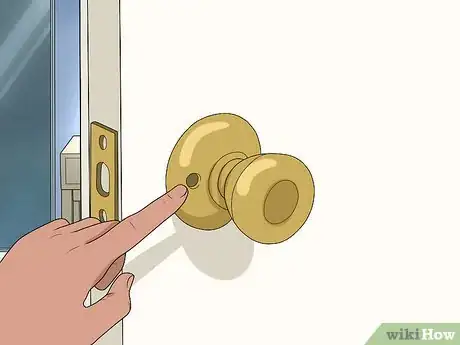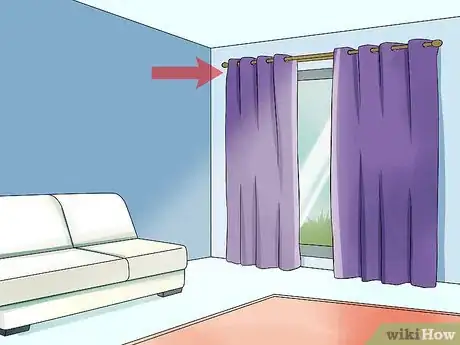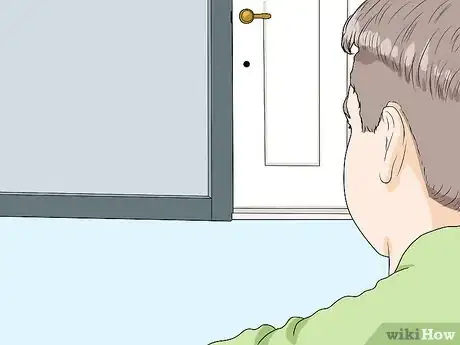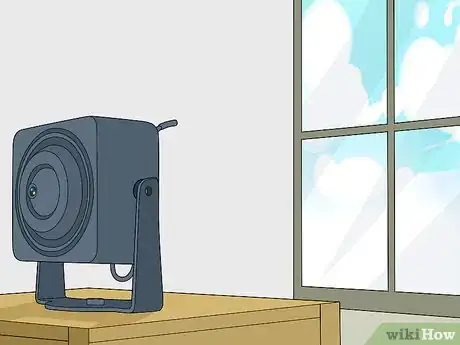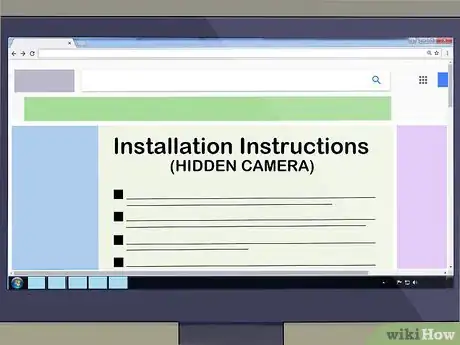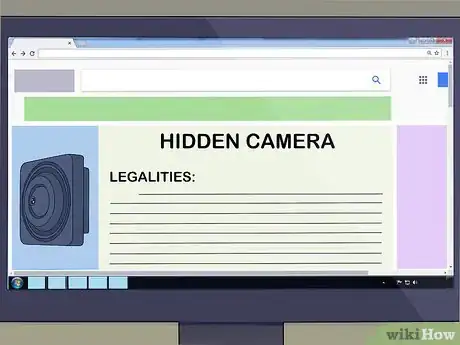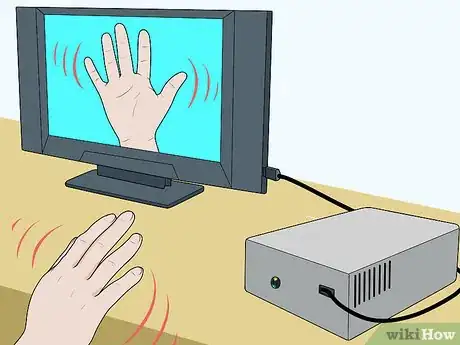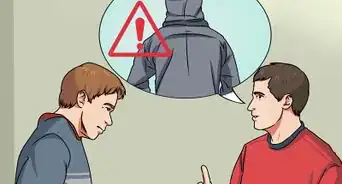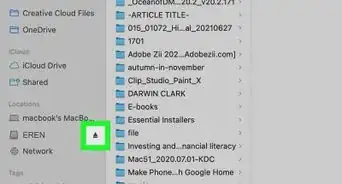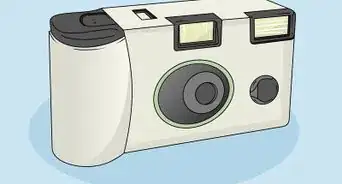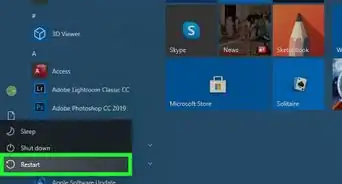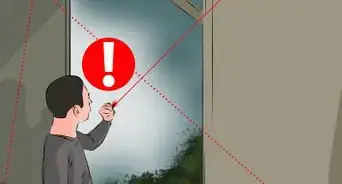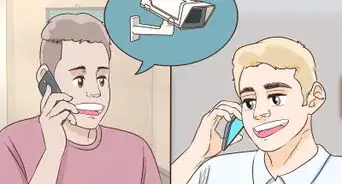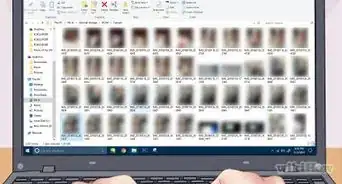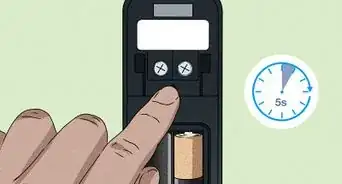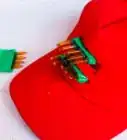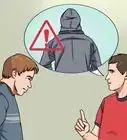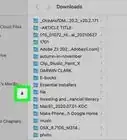This article was co-authored by Mitch Harris. Mitch Harris is a Consumer Technology Expert based in the San Francisco Bay Area. Mitch runs his own IT Consulting company called Mitch the Geek, helping individuals and businesses with home office technology, data security, remote support, and cybersecurity compliance. Mitch earned a BS in Psychology, English, and Physics and graduated Cum Laude from Northern Arizona University.
There are 7 references cited in this article, which can be found at the bottom of the page.
This article has been viewed 267,421 times.
In recent years, hidden cameras have gained popularity among private citizens as their technology has become more affordable. Certain types of small hidden cameras are sometimes referred to as "nanny cams" for their use in monitoring childcare providers.[1] These cameras also have many other uses, including identifying burglars and uncovering partner infidelity. One contributor to their growing popularity is the fact that modern hidden cameras are typically easy for the average person to install in a few simple steps.
Steps
Picking a Spot
-
1Place the camera so that it has a direct line of sight to whatever it's monitoring. The most important part of installing any hidden camera is finding the right place to put it. The first thing you should do is to think about where the person and/or behavior you're monitoring is likely to occur. Make sure your camera is in a place where it can point directly to this area with no visual obstructions present.
- For example, if you were worried about someone breaking into your home while you were away, you could place cameras near your doors and windows.
- If you suspected a partner cheating on you, you might place a camera facing your bed or pointing towards the passenger seat of your partner's vehicle.
- If you were worried about how a nanny was treating your baby, you would point the camera facing your child's crib.
- If you want to feed the neighborhood cats, you might want to check to see if other animals you would rather not feed are frequenting the food bowl. If you live in an area where passersby may see your camera, you would want to keep it disguised to prevent theft. In this case, you would keep your camera hidden and pointed at the food.
-
2Consider sound quality. If you're also trying to record crisp, clear sound, you will need to position your camera in a place that's conducive to audio recording. Make sure it's as close as possible to where you think the speaker will be. The camera should not be near anything noisy, such as a television or radio, which may drown out the speaker's voice or make it difficult to understand.
- For example, if you're installing a camera in a room with a television, place it on the opposite side of the room.
- Place a camera near a couch or chair your target is likely to sit in.
- When installing your camera in a car, place it away from the car's speakers.
Advertisement -
3Put the camera near its external power supply if necessary. While many modern hidden cameras are battery operated, some rely on an external power source and may need to be plugged into an available wall socket. If your camera draws power in this way, put it in a place close to an electric socket. The plug and wires will need to be either hidden or disguised as some mundane household appliance.[2]
-
4Connect your camera to a network if applicable. Some hidden cameras have internal storage, while others broadcast video through some type of network connection, and still others feature both as options.
- If your camera connects to a network through an Ethernet or USB cable, it must be well-disguised and in an inconspicuous place. Keep such a camera close to the computer or router it connects to.
- Most common commercial nanny cam models connect wirelessly. If you purchase this type of camera, make sure it's within range of a secure wireless network.
-
5Check to see if the eye is naturally drawn to the spot. Certain layouts will attract attention more than others. Avoid any spots where your target is likely to look directly at often.
- Keep your camera either significantly above or below average eye level.
- Ask someone to look for a camera you've installed in a particular room. If he or she is unable to find it with the knowledge that it's there, an unsuspecting individual is even less likely to spot it. If he or she quickly finds the camera, choose a different spot and try again.
- Some examples of good hiding spots people would not normally think to look include inside an air vent, within a fake smoke alarm, or under furniture.
- Some examples of potentially bad hiding spots where the eye is often drawn are any spots near paintings, light switches, and television sets.
-
6Shield your camera from the elements. Make sure any outdoor security cameras are both weather resistant and placed in a way that makes such damage unlikely to occur in the first place. Ideally, you should buy a camera specifically designed for outdoor use. If you don't, keep the camera sheltered within a sunroom or screened patio.[3]
Installation
-
1Check the lighting. Many hidden cameras require bright light to work their best. At the same time, they are unable to clearly record images when such light is shone directly into their lenses. Position your camera facing away from major light sources. Make sure that whatever you're trying to film is well-lit at the specific time of day it's most likely to be seen.[4]
-
2Make sure your camera is camouflaged. A hidden camera does you no good if your target knows it's there. There are two major strategies for making sure hidden cameras stay hidden:
- Make the camera itself small and difficult to see. In other words, a camera with a tiny visible lens that is put in a discreet location. This is what comes to mind when most people think of hidden cameras. The truth is this type of disguise is much easier to spot since an effective hidden camera must have an unobstructed view of whomever it's watching. If the lens can see a person, the person can see it.
- Disguise the camera as an everyday object. Tissue boxes, coffee makers, alarm clocks, digital picture frames, wall hooks, and even plug-in air fresheners are all examples of commercial nanny cams that blend seamlessly into the home environment. A person is much less likely to see a lens that was designed to look like a button compared to a separate camera that has simply been hidden.
-
3Follow any applicable installation instructions for commercial cameras. There are hundreds of different commercially available hidden cameras and each comes with its own particular set of installation instructions.
- If you've purchased your camera secondhand, try looking up its model number online. The user manuals for many electronic devices are freely available for download.
- Don't forget to install any necessary software. Most hidden cameras rely on external software to function. This can be a program that was bundled with your camera or one made by a third party available for download. Some programs are even meant to be installed on you smart phone for you to keep watch while on the go.
-
4Test your camera. It's very important to check your camera's functioning, especially if it's motion- or sound-activated. It's a good idea to make sure that your camera switches on when given the right stimulus. How you do this will vary greatly depending on your particular camera and any companion software.
- Start by waving your hand in front of the camera to see if your camera records at all. Check your computer or the camera's internal storage to see whether or not this motion was recorded.
- Try mimicking a real world scenario, such as walking into the room, to see if the camera records your actions with appropriate image quality.
- Test it again in a few hours and yet again a few days later to ensure that it continues to work.[5]
-
5Maintain your hidden camera. Even if setup was a breeze, you will likely need to do some maintenance from time to time to make sure your camera is still working.
- If your camera runs on battery power, you will need to either swap in fresh batteries or recharge the device. Consult the owner's manual for advice on how often this should be done. If no suggestion is provided, make a note of how quickly it takes the battery to discharge. If your camera connects to a Wi-Fi network, you can get notifications about the battery status or check in on the camera at any time.
- Clean out the camera's memory regularly. For cameras with limited internal storage, you should review and purge footage often. If your camera is hooked up to a server with a vast storage capacity, you may never need to do this.
- Like all electronics, your camera may break or wear down without you immediately knowing. Periodically double-check your camera to make sure it's still working.[6]
Understanding Hidden Cameras
-
1Check the legality of hidden cameras. In many instances, hidden cameras are illegal. However, the exact laws vary between different countries and even between different states. Check for applicable local laws before you install any hidden cameras.
- A rule of thumb is that it's legal for you to install hidden cameras as long as they are on your property and there is no reasonable expectation of privacy. For instance, it's usually legal to install a camera in your own living room or inside your car. However, cameras in rooms where privacy is expected are typically not allowed even when you own the property, such as in the case of a bathroom or inside a spare room you are renting out.
- Laws for audio recording are often different and more stringent than those concerning video. In the United States, 38 states allow for the hidden recording of conversations if at least one party consents, while the remaining 12 forbid recordings unless all parties are aware and consent to it.
- Hidden cameras at a place of employment are usually considered legal only if the employees are informed that they may be filmed.[7]
- In the United Kingdom, special allowances are made for placing cameras outside one's property in cases where elder abuse is suspected.[8]
-
2Choose a camera that meets your needs. While all hidden cameras basically do the same thing (provide covert surveillance), knowing your needs is fundamental for choosing the general type of camera you plan on installing.
- Do you need to be able to clearly identify the people being recorded? If your camera is intended to catch an otherwise unknown thief, you will want a camera that captures either video or still pictures with a relatively high resolution.
- Are you observing a known person looking for specific actions? Then you should find a camera that records movements well. Buy a camera that takes video with a higher frame rate/frames per second (fps). Avoid cameras that only take a series of still photos. Lower resolutions are fine in this case.
- What are the lighting conditions of what you would like to observe? If you plan on recording trespassers at night, you may consider getting an infrared camera.[9]
-
3Buy the right model of hidden camera. There are hundreds of different hidden cameras on the market. They range from pricy, high-tech models sold by surveillance experts able to record high resolution or infrared video to inexpensive low resolution cameras available in most shops that carry any type of electronics.
Making a Hidden Camera
-
1Gather your materials. You will need an old webcam, an electronics tool kit, a hot glue gun, and some type of inconspicuous housing. The housing should be something that you can safely take apart and won't look out of place with a wire attached to it. Some possibilities include a power supply, a coffee maker, or an old alarm clock.[10]
- You will be hooking this up to a computer, so a private desktop or laptop is also necessary. You can even use a tablet if you have one that is compatible with USB.
- With cheap nanny cams regularly available, making your own hidden camera is not the most practical method. However, if you happen to have these materials on hand, it has the advantage of being free.
-
2Take apart the webcam. Very carefully, use your electronics tool kit to remove your webcam's original housing. Remove all components besides the camera's lens, the circuit board, and its USB cable.
- Be very careful not to disconnect the lens or the USB cable from the circuit board. Keep all of these components attached.[11]
-
3Hollow out your housing. Unless you're using an object that is already hollow, you will need to make room for your camera to fit inside. Take the housing apart using any necessary tools and remove some or all of what's inside.[12]
-
4Make sure the housing has a hole for both the lens and the USB cable. If you're using something like an electric pencil sharpener, objects like this already have two perfect apertures built in. If not, your best option is likely to drill the holes yourself using an appropriate cutting bit. Make sure that the hole for the cable is at a seam where the housing opens.[13]
- When drilling a new hole, you need to consider a spot where the camera will look inconspicuous. Pick a part of your object that is relatively dark so that the lens will better blend in.
-
5Attach your webcam to the inside of its housing. Using your hot glue gun, attach your camera and circuit board to the inside of the housing. Glue the circuit board to the bottom or side of the housing, placing the glue between it and the circuit board's solder side. Mount the camera so that the lens is up against one hole. Be very careful not to get any glue on the camera lens.
-
6Put the housing back together. Place the USB cable on its opening before closing the housing back up. Use more hot glue if you need to. Be very careful to make the item look exactly as it did before and obscure any signs that it has been tampered with. Consider covering the cable with a well-positioned book or piece of paper.
-
7Connect your camera to your computer. Connect your new hidden camera to a computer using its USB cable and the computer's USB port. If the cable is too short, attach it to a USB extender. Install the webcam spy software of your choice and check to see if your camera is working.
- Test your camera by waving your hand in front of it. Can you see your hand on the computer screen? Did the software record that action? If so, try leaving the room for a while and then coming back in. Did your camera record your entrance? If so, then you have successfully made your own hidden camera.
Community Q&A
-
QuestionHow do I make sure a hidden camera isn't found?
 Community AnswerYou get a very tiny camera and place it behind an object. Cut a hole in the object just the size of the lens so you can see through the object. Then tape it to the back of the object, preferably something that's already in the room so there is no concern of them noticing.
Community AnswerYou get a very tiny camera and place it behind an object. Cut a hole in the object just the size of the lens so you can see through the object. Then tape it to the back of the object, preferably something that's already in the room so there is no concern of them noticing. -
QuestionCan SPR cameras see through walls into other rooms?
 Community AnswerNo, they can´'t see through walls. Cameras can not see through walls.
Community AnswerNo, they can´'t see through walls. Cameras can not see through walls. -
QuestionDo I have to get the camera to get the footage, or is it wireless transferred to my phone?
 Community AnswerThis depends on the camera. You can search for cameras that download the footage to your phone specifically.
Community AnswerThis depends on the camera. You can search for cameras that download the footage to your phone specifically.
References
- ↑ http://www.nydailynews.com/new-york/brooklyn/brooklyn-babysitter-charged-abusing-6-month-old-girl-article-1.2480900
- ↑ http://www.brickhousesecurity.com/category/hidden+cameras/hidden+camera+setup.do
- ↑ http://www.asecurelife.com/outdoor-security-cameras-101/
- ↑ http://www.brickhousesecurity.com/category/hidden+cameras/hidden+camera+setup.do
- ↑ http://www.brickhousesecurity.com/category/hidden+cameras/hidden+camera+setup.do
- ↑ http://www.brickhousesecurity.com/category/hidden+cameras/hidden+camera+setup.do
- ↑ http://employment.findlaw.com/workplace-privacy/are-hidden-cameras-at-work-legal-.html
- ↑ http://www.mirror.co.uk/news/uk-news/respect-elderly-campaign-worried-families-4657557
- ↑ http://www.asecurelife.com/outdoor-security-cameras-101/
